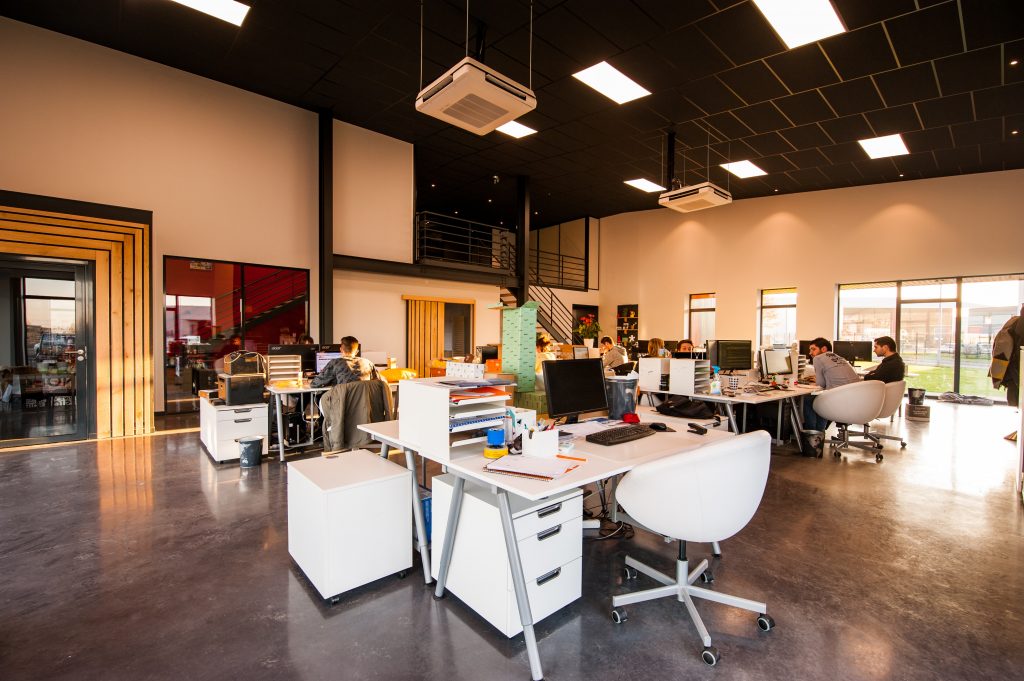As much as we miss interacting with coworkers personally, many have become accustomed to the flexibility of remote work.
According to a survey by FlexJobs, 95% of the people had a higher productivity rate prior to the pandemic. The reasons given were fewer distractions, efficient meetings, and a comfortable work environment. But throughout the pandemic, we learned that remote work does have its own set of benefits such as less time spent commuting to the office and more time for personal matters. With this, the new hybrid workplace model came to life, reaping the benefits of both office-based and remote work.
The hybrid workplace model is the best of both worlds, yet could be challenging to execute within an organization, especially for those primarily used to office-based work, and we wanted to help you out! Here are some tips to follow when transitioning to hybrid work!

Maximize remote collaboration with tools that support flexibility and accountability.
A survey by PwC on remote work in the United States shows more than 60% of executives are planning to increase budgets for virtual collaboration tools. The hybrid workplace model, despite having coworkers in different locations, encourages individuals to work together rather than alone. It’s crucial to choose the right collaboration tools for a physically dispersed workforce to avoid any miscommunication. From assigning tasks to discussing project details, the right collaboration tools will help boost the productivity, efficiency, and overall quality of products or services while also cutting down on time and costs.

Adjust the current company policies to support hybrid work, and ensure that they’re clear for everyone.
Implementing the hybrid workplace model means the entire company needs to revisit its policies and create new policies that support flexible work. In 2020, Microsoft conducted a research where almost half of the employees interviewed responded that remote work policies are something they look for when in search of work. This means that businesses with policies in support of flexible work will be able to attract more talent, leading to better quality employees. Clarify how the implementation of the hybrid workplace model will affect each employee to avoid any misunderstandings between coworkers and management. Moreover, any changes made in the future should be relayed to everyone involved.

Build relationships among coworkers and management.
To be able to manage a hybrid workplace effectively, managers and employees should interact more. Create strong relationships between coworkers for both work and personal life, and build on trust, which is extremely important with the hybrid workplace model. Whether these be through a video conference or in-person, doing so can help gather feedback on any challenges that a coworker might have with the new hybrid workplace mode, and it also shows that the organization values the opinions of each individual. Companies need to make sure that they are providing the necessary development and training tools to adapt to the new way of working.

Maximize each workspace in the office.
With a hybrid workplace model, employees would shift from remote work and office-based work, which could be difficult to manage seating at the workplace. As done by flexible workspaces, this inspired flexible seating with hybrid work where there are no assigned seats in the office. Instead, employees can use any available workspace. Creating a booking system for the office space would be ideal so that there is transparency with who is in the office for the day, avoiding any shortage of workspaces.

Revisit your real estate strategy.
Lastly is the office and its design. With more employees working remotely and less in the office at once, there should be a lot of vacant space in the office. All the free space allows you to revisit your real estate strategy and find ways to be more cost-effective with the new hybrid workplace model. Maybe this means downsizing your office or transferring the team to a flexible workspace in the meantime. This could help the business save on expenses and reallocate them towards tools supporting hybrid work.
The pandemic has changed our perception of work with all the experience gained from working remotely. We’ve been through a rollercoaster of emotions and opinions regarding both office-based and remote work, but the hybrid workplace model presents the perfect balance between the two. The hybrid workplace model empowers employees by offering more freedom to work where they feel most productive, ultimately leading to higher quality outputs.
If you’re looking for a workspace that is flexible enough to support the hybrid workplace model, a serviced office could be your solution! Visit our website here or reach out to connect@acceler8.ph and we’d be happy to learn more about your workspace requirements
Sources:
Pelta, R. (2021, June 10). Survey: Productivity, work-life balance Improves DURING Pandemic: FlexJobs. FlexJobs Survey: Productivity, Work-Life Balance Improves During Pandemic. https://www.flexjobs.com/blog/post/survey-productivity-balance-improve-during-pandemic-remote-work/.
PricewaterhouseCoopers. (2021, January 12). PwC’s US Remote Work Survey. PwC. https://www.pwc.com/us/en/library/covid-19/us-remote-work-survey.html
Microsoft. (2020, August). Building resilience & maintaining innovation in a hybrid world. http://d1c25a6gwz7q5e.cloudfront.net/reports/2020-11-09-workplace-whitepaper-FINAL.pdf

